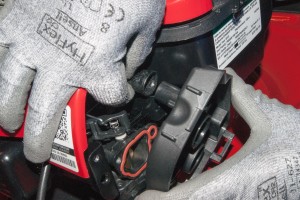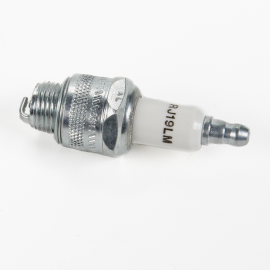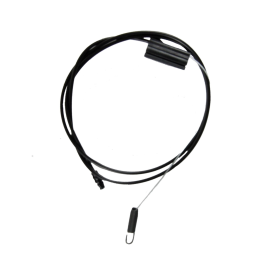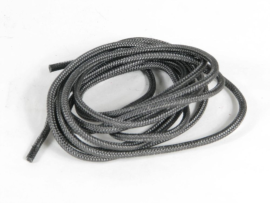- Kenmore refrigerator water filters
- Whirlpool refrigerator water filters
- Samsung refrigerator water filters
- GE refrigerator water filters
- LG refrigerator water filters
- Frigidaire refrigerator water filters
- KitchenAid refrigerator water filters
- Maytag refrigerator water filters
- Kenmore Elite refrigerator water filters
- Estate refrigerator water filters
- GE Profile refrigerator water filters
- Amana refrigerator water filters
- Bosch refrigerator water filters
- Dacor refrigerator water filters
- Electrolux refrigerator water filters
What causes lawn mower engine surging?


Fuel system problems or vacuum leaks through the air intake manifold are typical causes of lawn mower surges.
Here’s a rundown of the specific issues causing small engines to quickly cycle between idle speed and full throttle:
Contaminated gasoline. Old gas or gasoline contaminated with water can cause engine surging.
Clogged fuel tank cap vent. The fuel tank cap vent can get clogged with dirt or debris. The fuel cap vent helps keep gas flowing smoothly to the carburetor. When it’s clogged, the engine can surge.
Dirty air filter. The carburetor won’t get a good supply of air when the air filter gets clogged with dust and dirt.
Worn or damaged air intake gasket. The mower surges when the carburetor sucks air through an unsealed gap in the air intake manifold instead of through the air filter.
Dirty carburetor. Clogged fuel jets inside the carburetor commonly cause the lawn mower engine to surge. Clogged jets can’t provide the right mix of air and fuel to the engine.
Troubleshooting a lawn mower that is surging
To find the cause of a surging engine, first check the basic issues described above.
If fuel in your mower’s gas tank is older than six months or you left the lawn mower out in the rain, move the mower to a well-ventilated area and drain the tank. If you see water in the drained gas, you’ll also need to remove the bowl from the bottom of the carburetor and dispose of that gas.
Check the air vent on the fuel tank cap. Clear the vent hole if it’s clogged.
Replace or clean the air filter if it’s dirty.
If these basic troubleshooting tips don’t help, then you’ll likely need to make one of the repairs described below.
How do you fix a pulsating lawn mower?
Move the lawn mower to a well-ventilated area and take these steps to fix the engine.
Remove the air filter and its housing. Check the air filter housing gasket and replace that gasket if it’s worn or damaged.
If that gasket is okay, check the gasket and seals between the carburetor and the engine. Replace any worn or damaged seals or gaskets.
If external carburetor seals and gaskets are okay, then you’ll need to rebuild or replace the carburetor. Replacing the carburetor is a much easier repair that rebuilding the carburetor. Follow the steps in our How to replace a lawn mower carburetor repair guide/video to install a new carburetor. If the replacement carburetor for your engine is unavailable, or if you prefer to rebuild the carburetor, order the rebuild kit for your carburetor and follow the steps in our How to rebuild a lawn mower carburetor repair guide/video to clean and rebuild the engine’s carburetor.
How much does fixing a surging lawn mower engine cost?
If you can troubleshoot the surging engine and don’t have to buy parts, the cost of fixing your lawn mower typically isn’t more than the price of replacing the gas.
If you have to buy parts such as an air filter, carburetor or carburetor rebuild kit and you complete the repair yourself, the cost of fixing a surging lawn mower won’t be much more than the cost of the repair parts. The most expensive part that you would have to buy would be the carburetor. You’ll pay about $50 for the replacement carburetor on many common lawn mower engines.
When you have to take the lawn mower to a repair shop to get it fixed, then the repair will typically cost between $50 and $100 to fix a surging engine.
Symptoms for gas walk-behind mowers
Choose a symptom to see related walk-behind mower repairs.
Main causes: drive control cable failure, worn or broken drive belt, bad transmission, broken drive wheel…
Main causes: engine needs tune up, dirty or clogged carburetor, damaged flywheel key…
Main causes: dirty carburetor, bad spark plug, clogged air filter, engine choke problems, clogged gas cap vent…
Main causes: damaged cutting blade, loose cutting blade, damaged flywheel key, engine needs tune up…
Main causes: stale gas, engine needs tune up, bad spark plug, dead battery, bad recoil starter, faulty safety switch, ba…
Main causes: uneven wheel height settings, damaged wheel, dull or damaged cutting blade…
Repair guides for gas walk-behind mowers
These step-by-step repair guides will help you safely fix what’s broken on your walk-behind lawn mower.

How to replace a lawn mower spark plug
Take a few minutes to replace the spark plug during your lawn mower's annual tune-up or if the spark plug is burnt or cr…
Repair difficulty
Time required
15 minutes or less

How to replace a lawn mower drive cable
The drive cable engages the transmission to spin the drive wheels and move the mower across the grass. Replace the drive…
Repair difficulty
Time required
60 minutes or less

How to replace a lawn mower starter rope
These step-by-step instructions show how to replace a broken starter pull rope on a walk-behind lawn mower.…
Repair difficulty
Time required
30 minutes or less
Articles and videos for gas walk-behind mowers
Use the advice and tips in these articles and videos to get the most out of your walk-behind lawn mower.

Learn about the top 10 must-have electric lawn & garden tools for 2023…

Learn about all the convenient features on our Sears PartsDirect website that make your parts purchases easier.…

Get answers to frequently asked questions about Sears and Sears PartsDirect.…